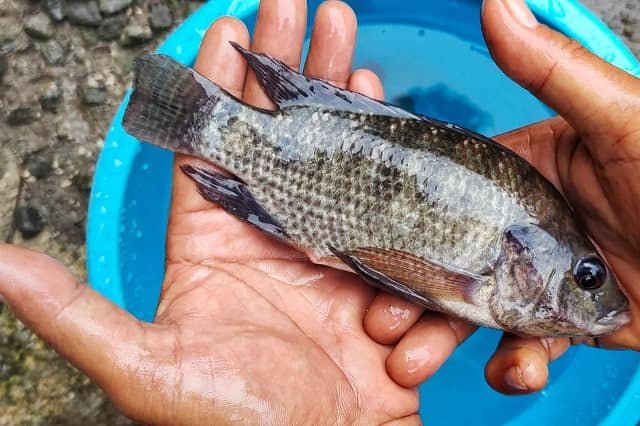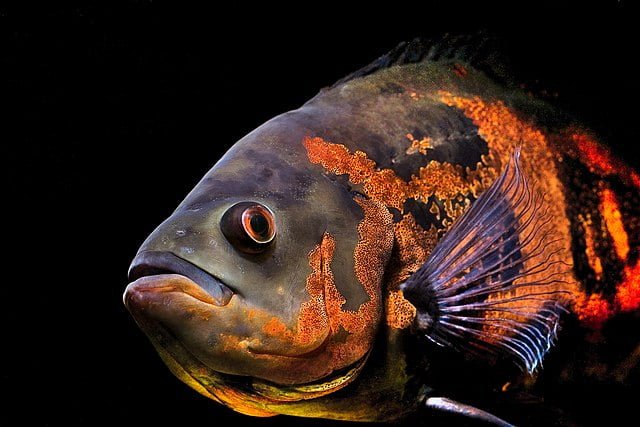
One feeding strategy in aquaculture involves the use of feed additives to enhance weight gain, feed efficiency, and the increase of muscle mass and carcass production.
Ractopamine, a widely used feed additive in animal production, has been shown to improve growth, body composition, and production efficiency. However, its effects on fish, particularly Nile tilapia (Oreochromis niloticus), remain relatively unexplored.
A team of scientists from the University of Brasilia, Catholic University of the North, Federal University of Reconcavo Bahia Cruz das Alma, Federal University of Lavras, Federal University of Minas Gerais, and the University of Chile studied the intriguing relationship between supplementation with ractopamine hydrochloride (RAC) and the growth, body composition, and morphometry of muscle fibers in Nile tilapia.
Design and Experimental Methodology
To investigate the effects of RAC on Nile tilapia, a controlled experiment was conducted. One hundred twelve fish with an average initial weight of 518.63 ± 5.49 g were randomly distributed into 16 circular tanks (450 L) following a complete random design.
Experimental diets included four treatments: a control group without RAC supplementation and three groups supplemented with RAC at increasing levels of 10, 20, and 40 mg kg⁻¹. Fish were fed their respective diets for 40 days.
Evaluation of Growth Performance
Throughout the experiment, researchers meticulously assessed growth performance, a crucial indicator of fish health and productivity. They closely monitored and analyzed feed consumption, weight gain, specific growth rate (SGR), and feed efficiency ratio (FER).
Body composition, a reflection of nutrient distribution and metabolic processes, was examined by determining the percentages of crude protein, moisture, ash, and lipids in fish fillets. Additionally, the fatty acid profile of fillets was analyzed to assess the impact of RAC on lipid quality.
Morphometry of muscle fibers, a determinant of muscle quality and functionality, was evaluated by measuring the cross-sectional area of muscle fibers and the proportion of different fiber types.
Stay Always Informed
Join our communities to instantly receive the most important news, reports, and analysis from the aquaculture industry.
Key Results and Findings
- RAC supplementation significantly influenced body composition, notably reducing lipid content by 26.7% and 26.1% in the 20 and 40 mg kg⁻¹ RAC groups, respectively.
- The fatty acid profile of fish fillets was also altered by RAC supplementation, with a decrease in unsaturated fatty acids C14:0 and C18:0.
- Protein levels in fish fillets increased with RAC supplementation.
- RAC supplementation had no significant effect on growth performance parameters or morphometry of muscle fibers.
Implications and Future Directions
The findings of this study suggest that RAC supplementation can effectively modify the body composition of Nile tilapia, reducing lipid content and altering the fatty acid profile.
“Unlike other studies, the inclusion of RAC in the diet did not increase PUFA deposition in tilapia fillet in the present study,” the scientists reported.
However, further research is justified to fully elucidate the long-term effects of RAC supplementation on overall fish health and well-being.
Conclusion
Supplementation with ractopamine hydrochloride shows promise in modulating the body composition of Nile tilapia. “This research has demonstrated that the inclusion of 20 mg kg⁻¹ of RAC in Nile tilapia diets significantly reduces fat, increases protein content in tilapia fillet composition, and potentially can be used as an additive for the fish feed manufacturing industry,” the scientists concluded.
While more research is needed to address potential long-term effects, these findings contribute to our understanding of the impact of RAC on fish physiology and nutrient metabolism.
Contact
Thiago Dias Trombeta
Faculty of Agronomy and Veterinary Medicine
University of Brasília
Brasília, Distrito Federal, Brazil
Email: thiago.trombeta@unb.br
Reference (open access)
Trombeta T, Uribe Tapia E, Olivetti De Mattos B, Pereira R, Dallago B, Leal R, Crovatto Veras G, Wacyk J. Ractopamine supplementation in diets for Nile tilapia (Oreochromis niloticus) at grow-out phase: effect on body composition and fatty acid profile. Lat. Am. J. Aquat. Res.. 2023;51(2): 210-217. Available from: doi:10.3856/vol51-issue2-fulltext-2969
Editor at the digital magazine AquaHoy. He holds a degree in Aquaculture Biology from the National University of Santa (UNS) and a Master’s degree in Science and Innovation Management from the Polytechnic University of Valencia, with postgraduate diplomas in Business Innovation and Innovation Management. He possesses extensive experience in the aquaculture and fisheries sector, having led the Fisheries Innovation Unit of the National Program for Innovation in Fisheries and Aquaculture (PNIPA). He has served as a senior consultant in technology watch, an innovation project formulator and advisor, and a lecturer at UNS. He is a member of the Peruvian College of Biologists and was recognized by the World Aquaculture Society (WAS) in 2016 for his contribution to aquaculture.




